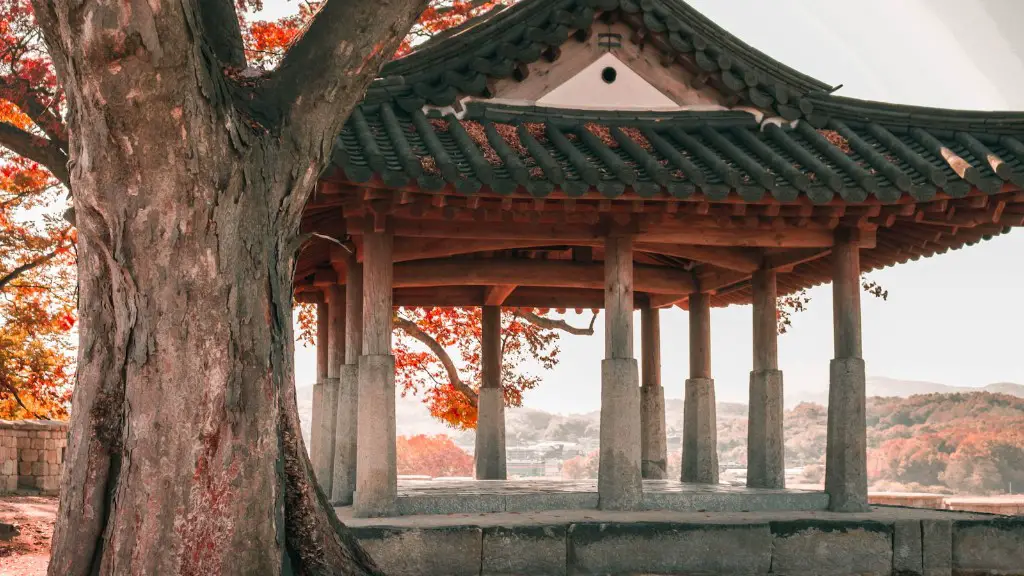Hinduism
Hinduism is one of the oldest and most complex religions in the world. It is a polytheistic faith that originated in ancient India and has evolved over thousands of years. At its core, Hinduism believes in the concept of karma, or consequence, as the basis of life. In Hinduism, all actions have consequences, and this ultimately impacts the soul’s journey after death. Some believe that after a person dies, their Atma (soul) departs to the spiritual realm, while others believe the Atma remains in existence and is reincarnated repeatedly until it reaches its ultimate destination, moksha or liberation.
What Happens To Atma After Death?
The ancient Hindu texts describe that when a person dies, their Atma (soul) will leave the body and travel to the spirit world, called Pitru Loka. Here, the Atma remains in an intermediate state until the completion of certain rituals, known as shraadh. After these rituals are completed, the Atma is said to depart from Pitru Loka and continue the journey to its ultimate destination, moksha or liberation.
The journey of Atma is believed to be under the influence of karma, which means that the Atma’s destiny after death is determined by the actions of the individual in their lifetime. Good deeds lead to a happier, more peaceful afterlife, while bad deeds can lead to a less desirable existence. The notion of karma also applies to what is known as samskaras, or the impressions left on an individual’s soul as a result of their experiences. It is believed that these impressions can either help or hinder the soul’s progress in the afterlife.
The Theory Of Reincarnation
One of the most significant beliefs in Hinduism is the concept of reincarnation, which states that after a person dies, their Atma will be reborn in another form. This cycle of life and death is seen as a continuation of the soul’s journey and its ultimate goal of achieving moksha or liberation. This concept of reincarnation is based on the belief that one’s Atma is immortal, and that it will continue to cycle through different bodies and lives until it reaches its ultimate destination.
While the beliefs regarding reincarnation vary among different Hindu sects, the general belief is that a person’s Atma will be reborn in whatever form is necessary to experience the consequences of the actions of their past life. Good actions lead to a favourable rebirth, while bad actions can lead to an unfavorable rebirth. While there are no specific details about what form an Atma will take in its subsequent life, it is believed to be determined by the individual’s thoughts, words, and deeds.
The Concept Of Moksha
The ultimate goal for Hindus is to achieve moksha or liberation from the cycle of karma and reincarnation. Moksha is the state of perfect union with the infinite, unconditional love and oneness with the universe. It is believed that when a person achieves moksha, they will be free from the suffering caused by the cycle of life, death, and rebirth, and will enter a blissful state of perfection and unity.
Moksha can be achieved through meditation, spiritual practice, and the observance of certain rituals or ceremonies. Each sect of Hinduism has its own interpretations and beliefs regarding moksha, but the common thread is that it is the ultimate destination of the Atma. The goal of the Atma is to strive for moksha and to experience the spiritual freedom that it brings.
The Afterlife Of Atma
It is believed that each individual’s Atma will continue its journey in the afterlife, and that its destiny is determined by the actions of the individual in their lifetime. Good actions will lead to a more favourable afterlife and a more peaceful journey to moksha, while bad actions can lead to a less desirable existence. The journey of Atma after death is believed to be influenced by karma and determined by the individual’s thoughts, words, and deeds.
Liberation Through Practices Of Yoga And Dharma
In Hinduism, it is believed that liberation (moksha) can be achieved by following the path of yoga and dharma. Yoga is the practice of physical, mental, and spiritual disciplines to attain a state of inner peace, harmony, and balance. Dharma is the practice of faithfully living one’s life in accordance with the laws and principles of Hinduism. Through the combined practice of yoga and dharma, one can experience liberation and inner freedom.
Role Of The Guru
The Guru is a spiritual teacher who can help individuals in their path to moksha. The Guru helps the individual by providing guidance, direction, and practical advice. They teach the individual about the laws and principles of Hinduism, as well as the importance of meditation, yoga, and dharma. The role of the Guru is to be a source of learning, wisdom, and inspiration for the individual on their journey to liberation.
The Impact Of Realising Moksha
When an individual realises moksha, it is believed that all of their karma has been absolved and they have achieved perfect freedom and enlightenment. This state of liberation is known as the experience of oneness with the universe, and is said to be a blissful state of perfect harmony and balance. It is believed that the individual has transcended the cycle of death, rebirth, and suffering and has achieved complete liberation.
Conclusion of Journey
The journey of the Atma after death is one of great mystery and complexity. According to Hinduism, the individual’s karma will determine where the Atma will go and what form it will take in its subsequent life. The ultimate goal of the Atma is to experience moksha or liberation from the cycle of life, death, and rebirth. This can be achieved through the practice of yoga, dharma, and the guidance and wisdom of a Guru. When the individual reaches moksha, they will have transcended the cycle of suffering and will experience a state of perfect freedom and bliss.
